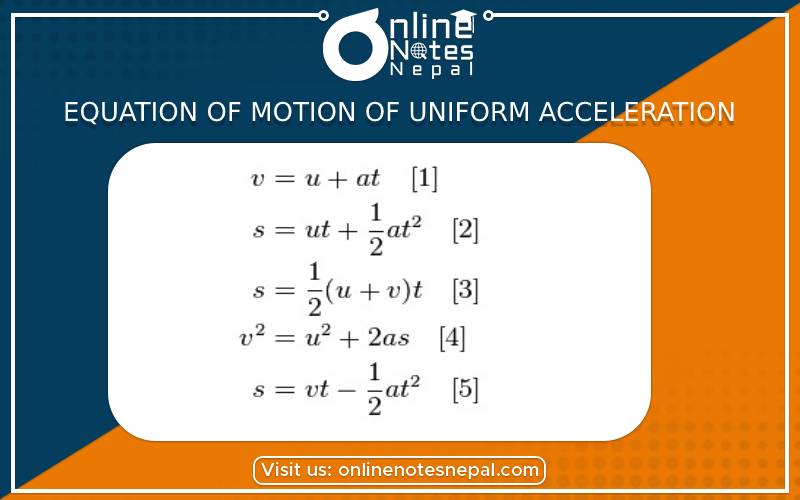Published by: Nuru
Published date: 12 Jan 2022

Equations involving displacement, initial velocity, final velocity, acceleration and time of motion of a moving body are equations of motion.
Consider a body moving in a straight line with uniform acceleration,
Let,
Displacement = s
Initial velocity = u
Final velocity = v
Acceleration = a
Time taken = t
We know, acceleration = (final velocity - iniitial velocity) / time
or, a = (v-u) / t
or, at = v-u
∴ v= u + at ........... (i)
This is the first equation of motion.
v = s / t
v = (u + v )/ 2
so,
s / t = (u + v) / 2 ....(a)
or, s / t = (u + u + at) /2
or, s / t = (2u + at) /2
or, s / t = u + 1/2 at
or, s = ut + 1/2 at²
This is the second equation of motion.
We have,
v = u + at..............(i)
from (i), we get, t = (v-u) / a .. (b)
from (a),
s = (u + v) / 2 * t
we can use the (b) in this eqn, we get,
s = (u + v) / 2 * (v - u) / a
or, s = (v² - u² ) / 2a
or, v² - u² = 2as
This is the third equation of motion.
s = 1/2 (u + v) * t
This is the fourth quation of motion.